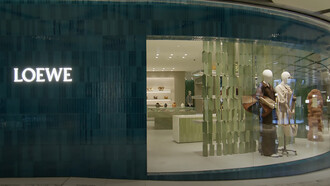Architecture is not apprehended as intellectual experience but as sensation – as emotion. Buildings must become presences – be like vast apocalyptic monsters or gentle floating albatrosses.
Buildings should be so invented as to be remembered forever, like the temples of the Indies and the pyramids of Egypt.
Fictional architecture comprises artists' imagination and visual realization of unbuilt structures, dwellings, or urban environments.
We know that architecture is not the stuff of techniques, materials accountancy and statistics, but of dreams, secret reason and dark obsessions.
Architecture incorporating fiction narratives can be achieved, beyond the constraints of function, purpose and context. Within a fictional narrative framework, ideas may be developed and expressed freely, as occurs in the form of the novel in literature.
“I search for a quality, long lost among architects, which produces spontaneous architecture of magical intensity.
In buildings I long for the deep and mysterious shadow, for equivalents to the magic of a Chirico painting. I have taken away the roof where it was darkest and brought in the sun.
I have asked the nature to invade architecture exuberantly as if it were a ruin.
I have borrowed the universal patterns of primitives to decorate surfaces, and painted walls in pinks and reds whose reflected light is kind to the flesh, and sometimes tarred a wall black for dignity and silence.
I have designed buildings which would appear to have been built and added to over a period of time; volumes with the soft and casual angularity of old towns.
Sometimes, I have wanted massive fortress-like blocks and other times light and transparent volumes; chimneys cutting into the sky like obelisks; coloured light shining through glass roofs or filtered through sails pulsating in the breeze as if they were alive.”
(Pancho Guedes, 2007, "Manifestos, papers, lectures, publications")
The man who dared to fuse architecture with other arts.
He wanted his buildings to be "weird and theatrical" but "easy to read. "Because "architecture does not have to be boring, sad and grey". And his, never was.
Pancho does not see architecture as a profession but as a type of total artistic environment in which he immerses himself entirely, drawing other colleagues, companies and clients with him.
Pancho Guede’s work is, in many ways, a reminder of the possibility of an unadulterated flow of creativity that can exist outside the world of intense scrutiny and reputational patronage that can stultify certain talents.
The projects are not just buildings, or groups of buildings, they are fables made up of lines, of construction materials, of words: each building must discover its own idea.
Many see his work as being eccentric and idiosyncratic. It is the rediscovery of architectural attitudes and values that history often insists on forgetting or obliterating.
Influenced by masters as Corbusier, Gaudi or Wright, Pancho looks in each one of them, for the organic aspects that oppose the most rationalist tendencies of the Modern Movement. By these connections, the voracious and open appetite for information and the artistic vocation created the predisposition for an atypical creativity.
Within the architectural universe, Pancho Guedes is, by excellence and circumstance, a true alternative modernist.
In his discovery of African cultural diversity, Pancho welcomes the symbolic and ritual dimension of material culture, embraces the animism of surfaces and forms, and gives himself the freedom to experiment in whatever language he pleases.
Pancho will cross the rationalism and structural rigor of Western culture with the magical and organic dimension of African symbology. At the beginning of the modern era, the ornament had been condemned as a crime, later returned as a virtually lost symbolic dimension of Western architecture. This symbolic dimension is simply to provide references for an identity creation, for an appropriation by the recipients, which, however, has dissipated in the specialization to which the architectural languages were conducted.
In his hybridization of cultures, he suggests another important return: the return of the Other. Immersed in the culture of the true Other of Western culture - the one under whose repression much of the growth of European modernity takes place - Pancho Guedes is among the first to open up to African culture and let it call into question the certainties of Eurocentric culture. Pancho becomes permeable to the magical aspects and spells of African culture and, with this, breaks the very rational and structuralist aura of its culture of origin. The Other is here the deforming mirror before which the pristine image that Western culture makes of itself shatters.
Pancho’s work is that of a solitary man who worked practically in an environment all of his own but who has been able to create around him an almost mystic environment. His work may not always be completely finished but his search for forms and textures is always very personal and his originality is beyond question. We can see in his work a shift from the limited understanding of architecture to the design of discrete structures, to an expanded notion that architecture and urbanism can incorporate a form of critical culture, or even more decisive channel in the domain of political and social action.
Pancho progressed by means of asserting a “manner”, an utterly personal version at a time where other looked for consensus, the uniformity of the modern style. He openly wished to be an artist whereas the mainland architects wanted to be “technicians” and comply with a disciplinary programme. He was not interested in architecture as a remedy, but as evasion: “you too, if you dream hard enough – you too can make half of your dream come true”. He possessed an architectural language in progress: visual, critical, ironical and caustic.















